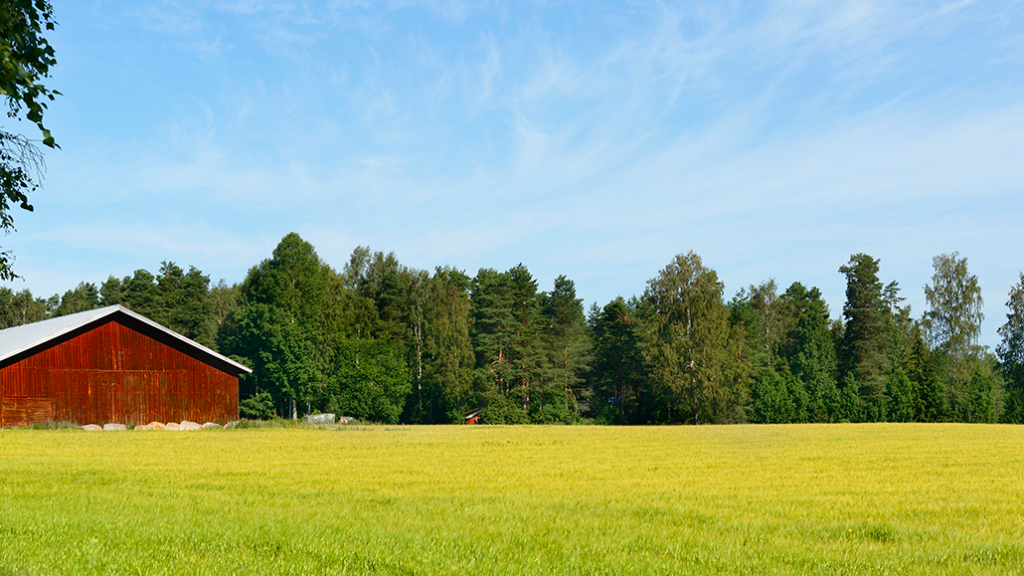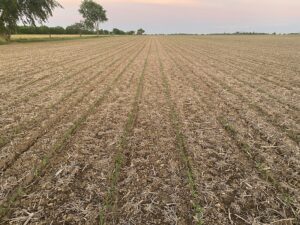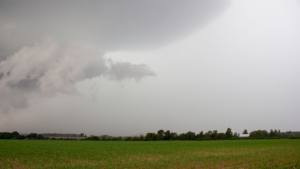Resilient woodlots
ADVICE FROM A FOREST EXPERT on HEALTHY ECOSYSTEMS

PRIVATE WOODLOTS DOT the Ontario countryside, forming a perfect backdrop for fall foliage photos when the leaves change, and eager photographers head out to hunt for the perfect shot of the vibrant colours that frame the rural landscape.
But the woodlots serve a greater purpose than aesthetically pleasing photos: they offer habitat for wildlife, birds, and pollinators; encourage biodiversity; provide opportunities for recreation like hiking, snowshoeing, cross-country skiing or snowmobiling; and for the landowner, if properly managed, can provide a source of income.
Properly managing woodlots has become increasingly challenging for landowners. “Over the past several decades, farmers have had to deal with the effects of accelerating climate change, including introduced species and abiotic disturbances such as severe weather that have damaged woodlots across Ontario,” says Jenny Liu, maple, tree nut and agroforestry specialist with the Ontario Ministry of Agriculture, Food and Rural Affairs.
In an on-demand session at the Ontario Agricultural Conference, Liu and Al Stinson, a retired employee from the Ministry of Natural Resources and Forests and past president of the Canadian Institute of Forestry, discussed management strategies for rural landowners who want to maximize the benefits from their woodlots.
START WITH A PLAN
Stinson emphasizes that a good management plan is important and advises landowners to develop short- and long-term goals.
“A good management plan starts with accomplishing those goals and objectives — clear and simple milestones and activities that are measurable,” says Stinson.
The plan starts with inventory collected in the forested area, with “boots on the ground.” While there is remote sensing technology called light detection and ranging (LiDAR) that can describe the forest estate and create an inventory — the Ontario Woodlot Association is currently undertaking a project to describe the forest estate at a county level — it is still important to get out and investigate the condition of a woodlot in person.
“It’s not just about species and height and diameter; it’s about the health of each individual tree,” says Stinson.
Stinson encourages landowners to engage forest professionals, such as registered professional foresters, managed forest tax incentive plan approvers, trained silvicultural tree markers, and experienced loggers to develop a plan.
“I have seen cases where [landowners] have got about half the financial revenue that they would have got if they had managed [the woodlot] properly, and they destroyed their forest,” says Stinson.
GREEN ILLUSION
Choosing which trees to thin out or harvest should focus on leaving the highest quality trees to prevent what Stinson calls the “green illusion”. In a logging operation, that would mean avoiding high grading — taking the high-value trees.
“I’m promoting retaining those trees for future growth,” says Stinson. Taking all the high-value trees means “the forest would still be green … hence the ‘green illusion,’ but it wouldn’t be the right trees, and it wouldn’t be as healthy an ecosystem as before the harvest intervention.”
Maintaining wildlife habitat in a forest is also extremely important. Stinson says it is important to keep cavity trees for feeding or for building nests and dens and mast trees such as beech and oak that provide hard nuts for animals to feed. Downed trees can also provide a habitat for small animals like voles and salamanders.
FOREST RECOVERY
“Wind has always been a natural disturbance event in our forests, insects have always been disturbance events, disease has always been there, fire, of course,” says Stinson. “It’s just happening a little more often now.”
Following damage due to wind, insects, disease, or fire, getting an experienced salvage harvest operation to deal with the impact and recover any salvageable material will help make it easier to work in your woodlot when it comes to regenerating it, says Stinson.
“I’m hoping that in many forests, there will be a cohort of natural regeneration, so when doing the salvage, do not damage the desirable existing natural region.”
In some situations, Stinson says you might have to start over by replanting — but not to get discouraged.
“I don’t throw up my hands in despair. Let’s work with what we’ve got, protect the forest.”
Stinson emphasizes that recovery operations are very dangerous, so safety is paramount. “If you are not a logging professional, get someone who is,” he says.
FIND OUT MORE
Stinson encourages landowners to join their local chapter of the Ontario Woodlot Association to learn more about managing their woodlot. More information is available at www.ontariowoodlot.com. •











